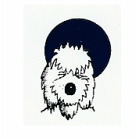|
Happy Kwanzaa: "I figure apartheid in the old South Africa didn’t end because of morality or outrage, but because of all the public toilets they had to build. See, there were four racial classifications: white, black, coloured, and Asian. Instead of building, let’s say in a public park, one restroom for each sex, and a single drinking fountain for everyone, the South Africans had to build eight bathrooms and four drinking fountains. Think about it. Cricket fields. Amusement parks -- suppose you owned a real small telephone-booth of a diner -- a place where you could only fit about five big eaters and you had to build eight restrooms? Crazy, huh? Then, of course, they had to build separate septic tanks, use separate sewers…”
edited 12/28: first posted 12/26/16: (Happy Kwanzaa) 12/26 to 1/1/17: "Dr. Maulana Karenga, professor and chairman of Black Studies at California State University, Long Beach, created Kwanzaa in 1966. After the Watts riots in Los Angeles, Dr. Karenga searched for ways to bring African-Americans together as a community. He founded US, a cultural organization, and started to research African “first fruit” (harvest) celebrations. Karenga combined aspects of several different harvest celebrations, such as those of the Ashanti and those of the Zulu, to form the basis of Kwanzaa. "The name Kwanzaa is derived from the phrase 'matunda ya kwanza' which means 'first fruits' in Swahili. Each family celebrates Kwanzaa in its own way, but celebrations often include songs and dances, African drums, storytelling, poetry reading, and a large traditional meal. On each of the seven nights, the family gathers and a child lights one of the candles on the Kinara (candleholder), then one of the seven principles is discussed. The principles, called the Nguzo Saba (seven principles in Swahili) are values of African culture which contribute to building and reinforcing community among African-Americans. Kwanzaa also has seven basic symbols which represent values and concepts reflective of African culture. An African feast, called a Karamu, is held on December 31." - History (history.com) Please support the National Museum of African American History and Culture, NMAAHC: 1400 Constitution Avenue NW/ Washington, DC 20560/ 844-750-3012 Please give to the NAACP: 4805 Mt. Hope Drive, Baltimore, Maryland 21265/ 410-580-5777
0 Comments
Leave a Reply. |
A carbuncle is a roiled mass of skin or a beautiful gem. The incredible gem is pictured in the logo below and at the bottom of the short story section...
Kevin O'Kendley is the owner of Carbuncle Moon, and the author of all original material -- cartoons, blogs, shorts, essays, articles -- on the website (there has been a very limited editorial input in some of my work). All quoted sources are noted. I am responsible for all posts. The only blogs not time-dated are those advertising nonprofits. All nonprofits are vetted, investigated, though after the summer of 2018 my vetting has lapsed: (6/1/21).
Kevin O'Kendley: P.O. Box 172, Winterport, Maine, 04496, and 200 P Street, A-32, Sacramento, California, 95814, [email protected]. Technical help is provided by an evolving computer genius, my son, Conor O'Kendley: A good kid with a great heart who can be reached at P.O. Box 172, Winterport, Maine, 04496. (Conor is in the Navy now, a swabby) Photography provided by a visual artist, my daughter, Caitlin O'Kendley: a young woman with a beautiful soul. (Caitlin is in college now, a media-journalism student) If your nonprofit is advertised on this site and you wish to have it removed please contact me at the above listed snail-mail or email address or use the contact form on the website. If you download a blog, cartoon, a short story -- or for any other reason -- and wish to donate $ to this site, its author and technical support personnel, please send donations to above listed addresses payable to Kevin O'Kendley. My family and I could use the dinero. All cartoons, blogs, and short stories are for sale. Categories |


 RSS Feed
RSS Feed